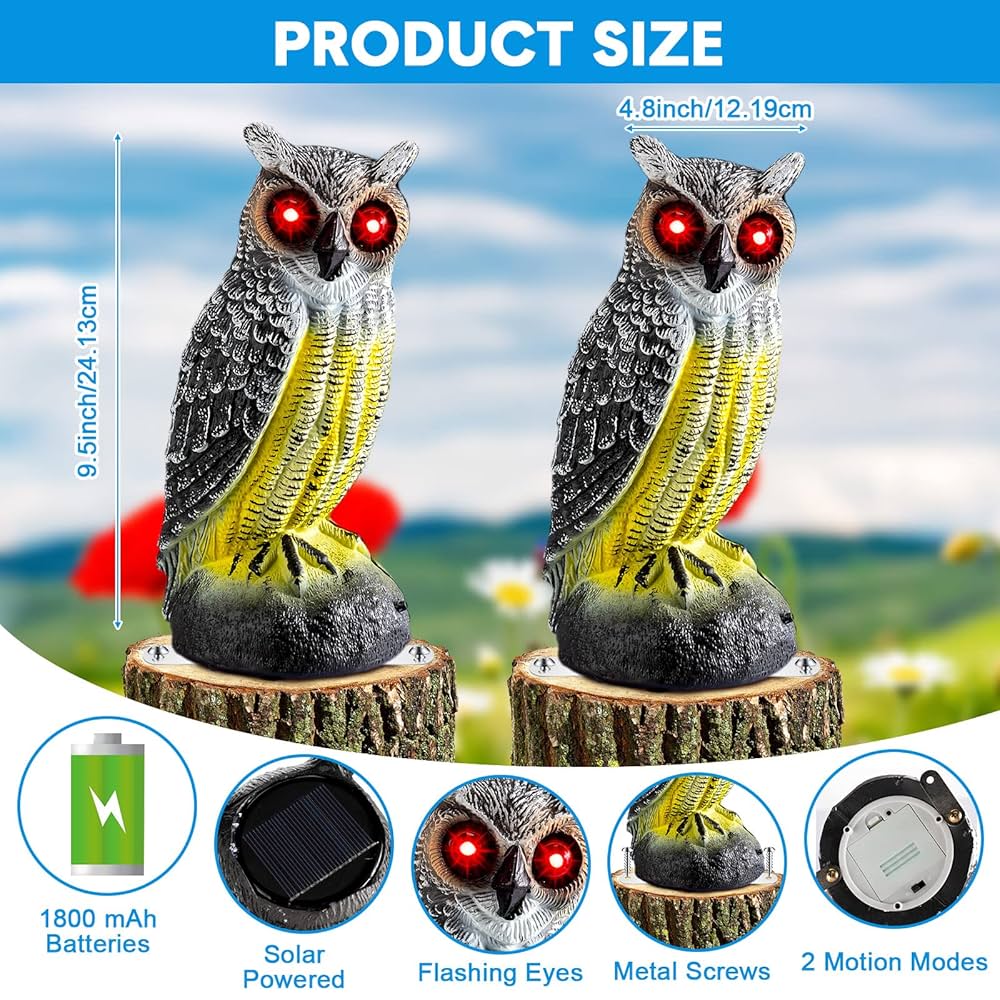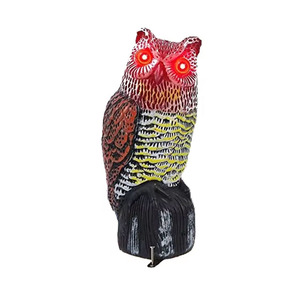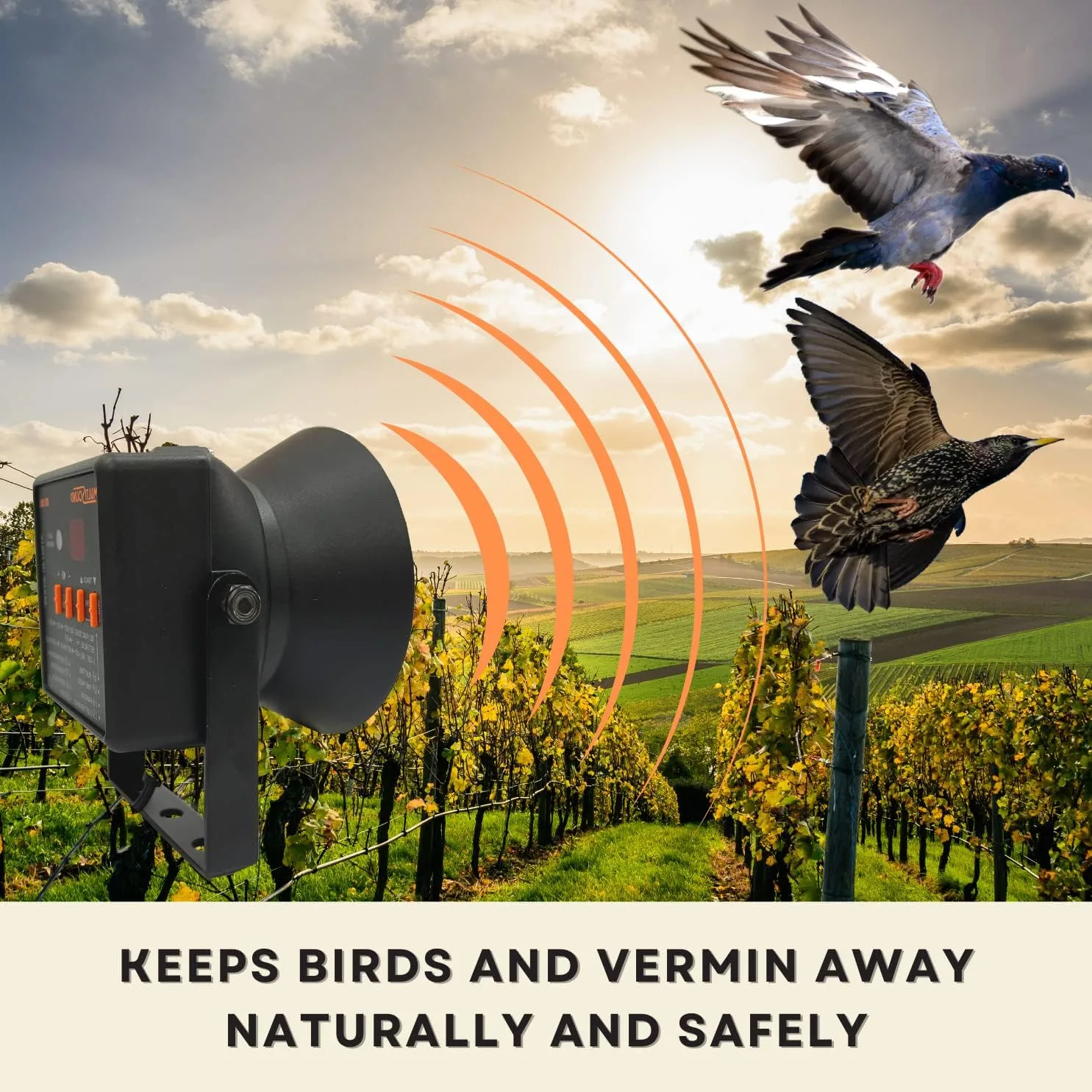Are birds causing trouble in your garden or on your property? You’re not alone.
Many people struggle with keeping birds away without harming them or their surroundings. What if you could use sound to scare birds away safely and effectively? This simple, natural method could be the solution you’ve been searching for. You’ll discover how sound works to keep birds at bay and learn easy ways to put it into action.
Keep reading to find out how to protect your space and enjoy peace of mind.
Why Birds Are A Problem
Birds can cause many problemsin homes and farms. They damage crops, buildings, and gardens. Their droppings can spread diseasesand make places dirty. Birds can also block ventsor nests in unwanted areas.
Common birds that cause damageinclude:
- Pigeons – often found in cities and farms.
- Seagulls – damage crops near water.
- Starlings – eat fruits and seeds.
- Crows – break plants and eat small animals.
- Woodpeckers – peck on buildings and trees.
Areas most affected by birdsare:
- Farms with fruits and vegetables.
- Urban buildings and roofs.
- Warehouses and storage areas.
- Parks and gardens.
- Airports, where birds can cause safety risks.

Credit: www.amazon.in
How Sound Scares Birds
Birds have very sharp hearing. They notice sounds humans may not hear. Loud or sudden noises can startle and scare them. This makes them fly away quickly.
Birds react to sounds that are unfamiliar or loud. Sounds that mimic predators or danger cause fear and avoidance. Sounds that are too constantmay lose their effect over time.
- Ultrasonic sounds that humans cannot hear
- Predator calls like hawks or owls
- Loud noises such as clapping or banging
- Distress calls from other birds
- Random or sudden noises to avoid habituation
Popular Sound Devices
Ultrasonic bird repellers use high-frequency sounds. These sounds are too high for humans to hear. Birds find these sounds very annoying. The devices are silent to us but scare birds away. They can cover large areas, like gardens or fields. Easy to set up and require little maintenance. These devices are eco-friendly as they do not harm birds.
Sonic bird scaring systems make loud noises. These sounds mimic natural bird predators. They make birds feel unsafe and fly away. The systems can be programmed to change sounds. This prevents birds from getting used to the noise. Many farms use these systems to protect their crops. They are also useful in airports to keep birds away.
Birds have natural alarm and distress calls. These sounds signal danger to other birds. Devices can play these calls to scare birds. They work best in areas with many birds. Easy to install and operate. These calls make birds think there is a threat nearby. So, they fly away quickly to stay safe.

Credit: www.alibaba.com
Diy Sound Solutions
Making noise makers is a simple way to keep birds away. Use old cans, plastic bottles, or metal lids. Hang them where birds gather. Wind moves them, creating sounds that birds dislike. The noise scares birds without hurting them.
Recorded bird calls can also help. Play sounds of predator birds or alarms. Use a small speaker or phone outside. Change the sounds often to avoid birds getting used to them. This keeps birds alert and less likely to stay nearby.
Effectiveness And Limitations
Sound can effectively deter birds by creating an uncomfortable environment. Yet, birds may get used to the noise, reducing long-term success. Its effectiveness depends on sound type, volume, and bird species.
Habituation Risks
Birds can get used to the same sounds quickly. This makes the sound less effective over time. Different sounds or changing patterns help keep birds alert. Repeating the same noise all the time can cause birds to ignore it. Using sounds alone may not keep birds away for long.
Sound Range And Coverage
| Sound Device Type | Effective Range | Coverage Area | Notes |
|---|---|---|---|
| Ultrasonic Devices | Up to 50 feet | Small areas like gardens | Hard for humans to hear |
| Audible Noise Makers | Up to 200 feet | Medium areas like yards | Can bother neighbors |
| Directional Speakers | Up to 300 feet | Targeted spots | Focus sound to one area |
Combining Sound With Other Methods
Mixing sound with visual or physical barriers boosts bird control effectiveness. Sounds combined with nets or spikes keep birds away longer. Using multiple methods creates a stronger shield against bird damage.
Visual Deterrents
Visual deterrentslike shiny objects and fake predators can help scare birds. They create movement and reflectionsthat birds dislike. Hanging strips of aluminum foil or old CDs near crops works well. Plastic owls or hawksalso frighten birds, especially if moved often.
Physical Barriers
Physical barriersstop birds from reaching fruits or seeds. Netting over plants is a simple and effective way. It creates a strong wall that birds cannot fly through. Bird spikes on ledges and fences keep birds from landing. Wire meshcages can protect small gardens or bird feeders.
Safety And Environmental Considerations
Sound devices to scare birds can affect other animals. Some sounds may disturb pets, wildlife, and farm animals. Careful use is important to avoid harmor stress to these animals.
Check local noise lawsbefore using sound devices outdoors. Many places have limits on noise levels and times. Following these rules helps keep the area peaceful and avoids fines.
| Aspect | Considerations |
|---|---|
| Impact on Non-Target Animals |
|
| Local Noise Regulations |
|

Credit: connachtagri.ie
Frequently Asked Questions
What Sounds Are Best To Scare Birds Away?
Loud, sudden noises like ultrasonic sounds or predator calls work well to scare birds.
Can Sound Alone Keep Birds Away From Gardens?
Sound can help, but combining it with visual deterrents improves results.
Are Ultrasonic Bird Repellents Safe For Pets And Humans?
Yes, ultrasonic repellents are generally safe and inaudible to humans and most pets.
Conclusion
Sound to scare birds away works by creating noise that birds dislike. This method is safe and does not harm animals. It helps protect gardens, crops, and buildings from bird damage. Using sounds like distress calls or predator noises keeps birds at a distance.
Changing sounds often prevents birds from getting used to them. Try combining sound with other methods for better results. Keep your space peaceful and bird-free. Simple, natural, and effective—sound is a helpful tool to keep birds away.
